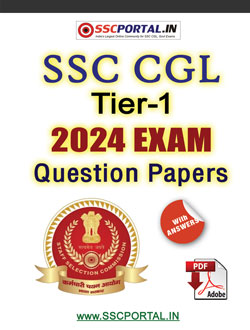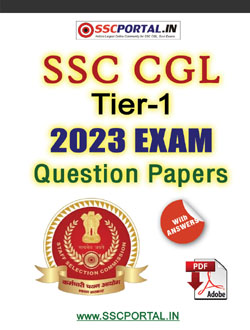(Study Material) Combined Graduate Level Exam - Tier - II : Comprehension (MCQ)
Comprehension (MCQ )
Direction : Read the following passages carefully and answer the questions that follow.
The current global food situation is very serious and hence,
we need to understand the reasons for such a dramatic increase in food prices in
a short period.
It is argued that increases in energy costs are resulting in cost push inflation
but contribution of energy costs to overall costs in agriculture may not explain
the huge increase in food prices.
Related to the current elevated energy prices there has been a diversion of corn
and edible oils to bio-fuels, which is significantly influenced by policy
mandates. Very clearly this diversion to bio-fuels is a policy induced new
reality, which coincided with price escalation in precisely those products and
hence, is noteworthy.
The financialisation of commodity trade and current extraordinary conditions in
global financial markets could have influenced the spurt in prices. The recent
reductions in interest rates in the US and the injection of liquidity have
resulted in investors seeking new avenues such as commodity markets, in view of
the turbulence in financial markets and the low returns in treasuries. The
relatively easy liquidity and low interest rates, by themselves make holding of
inventories attractive and thus induoe greater volatility in commodity markets.
The weakening of the US dollar is also advanced as a reason for the recent
volatility in commodity markets, including food items. It is evident that this
phenomenon is now also coinciding with the across the board rise in food prices.
In brief, while there are demand and supply side pressures on food items, there
is considerable merit in the argument that the recent extraordinary increases in
food prices are closely linked to public policy responses to high energy costs
in advanced economies and the turbulence in financial markets and financial
institutions. It is said that the impact of such policy induced diversion of
food to bio-fuels is significant at this juncture and reflects a preference to
fill the fuel tanks of automobiles rather than fill the empty stomachs of
people.
Similarly, it is sometimes held that the weight accorded to financial stability
in public may now be at the expense of stability in real sector-especially of
sensitive commodities like food. At the same time, there is a general consensus
that public policy in regard to food in many economies around the world has not
provided adequate incentive to farmers to increase the supply of food and other
agricultural products to comfortably match the growing demand over the medium
term.
1. The passage lays emphasis on which of the following central theme (s) ?
A. The abysmally throwaway prices offered for food commodities.
B. The worldwide acute shortage of food commodities.
C. Promoting the use of bio-fuel for automobiles.
(a) A only
(b) B only
(c) C only
(d) None of these
2. Which of the following statements is FALSE in the context of the passage?
A. Unusual conditions in global financial markets have aggravated the food
price.
B. No government would prefer fueling vehicles to feeding the hungry.
C. Maintenance of financial stability in public policy will be at the cost of
stability in the real sector.
(a) A and B
(b) Band C
(c) B only
(d) C only
Directions (Q. Nos. 3 to 5) Choose the word which is most opposite in meaning of the word given in bold as used in the passage.
3. consensus
(a) deviant
(b) disagreement
(c) dejection
(d) denial
4. elevated
(a) raised
(b) stabilised
(c) inclined
(d) fallen
5. volatility
(a) agitation
(b) effervescence
(c) optimism
(d) inactivity
Directions (Q. Nos. 6 to 7) Choose the word/group of words which is most nearly the same in meaning as the word given in bold as used in the passage.
6. incentive
(a) acceleration
(b) surplus
(c) baiting
(d) encouragement
7. advanced
(a) put forward
(b) set aside
(c) taken over
(d) marched forward
© SSCPORTAL.IN






